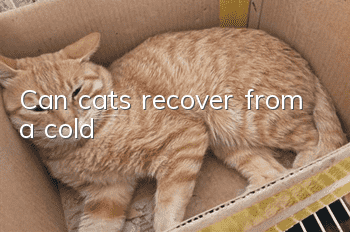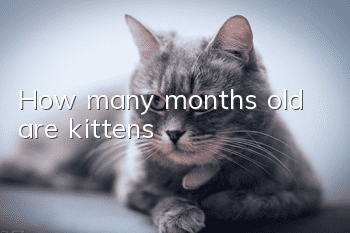Can cats recover from a cold?

A cat has a cold. If it is an adult cat with mild symptoms and strong resistance, it can recover on its own. Generally, it can recover in 3 to 7 days. If the cat does not improve for more than 5 days, it needs timely medication; resistance Poor cats (kitten or elderly cats) are less likely to recover on their own when they catch a cold and need timely intervention and treatment. Whether the cat can heal on its own depends mainly on the virulence of the pathogen and the body's resistance. Cats get a common cold, and if their body's resistance is strong, they may recover on their own.
1. Causes of cat colds
Cat colds are divided into non-infectious causes and infectious causes.
1. Non-infectious causes: Cats are prone to colds and colds when the air conditioner is too low during the change of seasons or in summer. The owner should provide the cat with appropriate measures to keep warm. If the symptoms are mild, the cat can survive through resistance. recover.
2. Infectious causes: Cats infected with respiratory viruses and bacteria will also have respiratory symptoms, that is, colds. In this case, cats will not only infect other cats, but the symptoms are generally more severe and generally cannot resist on their own. Strength recovery.
2. Cat cold symptoms
Cat colds usually include sneezing, runny nose, elevated body temperature, increased eye secretions and nasal secretions. Mild symptoms may only include sneezing. , a small amount of runny nose, and poor mental state.
Cold symptoms caused by non-infectious causes are generally mild. Cats can recover through resistance by keeping warm and supplementing nutrition (respiratory prescription ointment). Generally, they can recover in 3-7 days, but if the symptoms last for 5 If it lasts more than 30 days, and the symptoms are even severe, it is recommended to go to the pet hospital for a test to check whether you are infected with the virus.
Cold symptoms caused by infectious causes are usually severe and may include sneezing, runny nose, elevated body temperature, conjunctivitis, and purulent nasal discharge (yellow). The owner takes the cat to the pet hospital for a "feline respiratory tract nucleic acid five-joint test", which can detect several pathogens at the same time, making it easier to treat the cause and administer medication accordingly. For viruses, drugs such as famciclovir and interferon are used, together with antibiotics (the most commonly used are Sono and Mobixin) to prevent secondary infections. If you have eye inflammation, you need to use pet-specific anti-inflammatory eye drops (floxacin, etc.), respiratory tract For conditioning, you may also use Kechuanning and respiratory prescription ointment to help relieve symptoms.
- Is it better for cats to eat raw or cooked egg yolks?
- What should I do if my cat likes to bite its owner’s fingers? How to stop this bad habit?
- What should I do if Garfield doesn’t like to eat and is very picky? A must-read for novice cat owners!
- Cats use cat litter but poop randomly
- What should you pay attention to when raising Ragdoll cats at home?
- How to solve the problem when a cat’s nose makes a popping sound
- What should you do if a Persian cat bites people fiercely? Common sense on Persian cat training!
- 9 ways to ease the stress of your cat’s vet visit
- How to use cat hair removal cream and precautions
- Why do cats like to smell their owners’ mouths?



